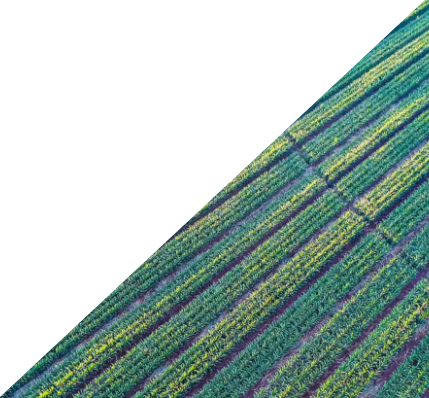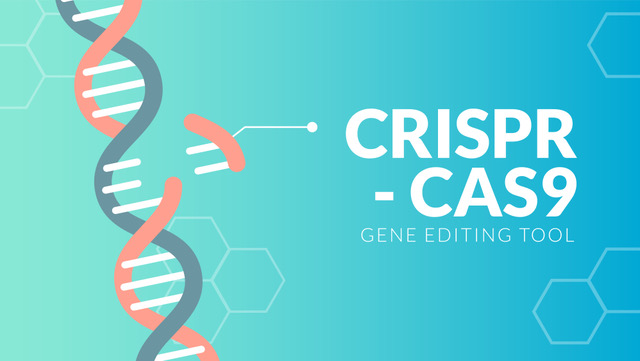Knowledge Hub
Blog


CRISPR EDITING AND THE FUTURE OF PLANT BREEDING
Guy Kol | Dec 6, 2020

One of the greatest scientific breakthroughs was recently acknowledged, when Emmanuelle Charpentier and Jennifer Doudna have been awarded the 2020 Nobel Prize in Chemistry for their development of CRISPR/Cas9 genetic editing. The novelty of CRISPR/Cas9 has lent itself to many possibilities in the understanding of human disease and discovery in their therapeutics as well as in the realm of animal and plant breeding to improve agricultural yields and traits. This is especially salient given the world’s growing population and need to ensure food security.
Historically, traditional breeding methods took advantage of genetic variability to enhance crops through a long process of crossing and selecting. This timely and strenuous process pushed scientists to find better technology to shorten and improve the process. One such way, and most promising, is the technology of genome editing using CRISPR/Cas9
The CRISPR/Cas (clustered regularly interspaced short palindromic repeat) system evolved as an adaptive immune response in bacteria and archaea to defend against invading viruses. The bacteria capture snippets of invading viral DNA and create DNA plasmids known as CRISPR arrays, which are then used for memory of the virus. If the virus attacks again, the bacteria rapidly produce RNA from the CRISPR arrays to target the DNA and recruits Cas9 enzyme to create double stranded breaks (DSBs) in the DNA, disabling the virus.
In plant breeding, this technology can be exploited for developing precise edits within a plant’s genome to improve the crop. Using the same understanding, DNA targeting specific gene loci of interest and the Cas9 enzyme can be introduced into various organisms to create DSBs in the region of interest to a breeder.
The DSBs can be repaired by two separate pathways or the combination of both. The non-homologous end joining pathway (NHEJ) is error-prone and frequently introduces random small deletions or insertions at the junction of newly rejoined DNA. The homology-directed repair pathway (HDR) is precise and stimulated by the availability of the homologous DNA repair template (DRT) that surrounds the double stranded break. Both pathways, are exploited for different interests, NHEJ for generating the loss-of-function of a gene or knock-out mutants, while HDR can assist in allele/gene replacement or more precise modifications such as tagging genes of interest.
The application of this technology is increasingly viewed as vital due to rising threat of global climate change and the rise in diverse agricultural, environmental and ecological stresses. So far, many different CRISPR/Cas9 kits were developed to target mutagenesis at specific genome loci, transcriptome regulations, epigenome editing, base editing and precise gene replacement and tagging in plants and the use of these kits continues to increase.
At NRGene, our goal is to develop the ability to replace any DNA fragment with the desired version allowing breeders to efficiently introduce elite alleles into commercial cultivars. This is difficult to achieve through common crop breeding practices, and requires time-consuming and labor-intensive activities. Using CRISPR/Cas9 mediated HDR pathway of DSBs has the potential to mitigate those difficulties and introduce desired traits within only 2-3 generations in the absence of any undesirable traits – something that cannot be achieved using conventional methods. Thus, the precise replacement of an existing allele with an elite allele is the holy grail of crop breeding and genetic improvement.
Academic use:
Here are some examples of what current academic efforts are doing to replace genes within crops:
- Generating chlorsulfuron-resistant maize plants by the substituting proline 165 with a serine in the ALS2 gene using either single-stranded oligonucleotides (SSON) or double- stranded DNA vectors as DRT via CRISPR/Cas9 (Svitashev et al. 2015).
- Again, in maize; inserting the native GOS2 promoter, which confers a moderate level of constitutive expression, into the 50-untranslated region (UTR) of the native ARGOS8 gene or into the native promoter of ARGOS8. Compared to the wild type, the developed ARGOS8 variants showed increase yield of grain by five bushels per acre under stressed conditions and had no yield loss under well-watered conditions in the field. This demonstrates the utility of the CRISPR/Cas9 system in generating novel allelic variations for breeding drought tolerant crops (Shi et al. 2017).
- The success of precise editing of the ALS gene in rice through sequential agrobacterium-mediated transformation, albeit at a very low efficiency (Endo et al. 2016).
- The agrobacteriummediated transformation method was also used for obtaining ALC (alcobaca) gene replacement in tomato. In both the absence or presence of the homologous repair template, a low replacement efficiency (7.69%) was achieved in T0 transgenic plants, respectively (Yu et al. 2017).
Commercial Use:
Several breeding processes are already using CRISPR technologies and certainly expect a significant reduction in cultivar development time. Examples of such products include tastier cherry tomatoes, mushrooms that do not brown, disease resistant cacao trees and more. In some cases, the development time is projected to be reduced by three-fold.
Challenges and future development
In the years to come, the manipulation of diverse tools to improve HDR efficiency in crop plants, de nevo domestication, and pyramiding multiple traits will become hotspots in crop genome editing. It is worth mentioning that precisely edited crops with targeted elite allele replacement should be exempt from regulatory procedures and biosafety concerns, if such a variation or allele exists in crop landraces or wild relatives and occurs naturally during evolution or domestication.
Guy Kol
Guy is one of NRGene founders and served as the VP of R&D for several years where he had led the development of GenoMAGIC. Today, Guy is focusing mainly on managing NRGene’s long term, strategic projects while still helping in shaping NRGene’s future products and offerings. After completing a B.Sc. in Computer science and biology in the Hebrew University in Jerusalem, Guy started working at Compugen where he was involved in using alternative splicing to discover new drug targets. During this period Guy also got an M.Sc. (Human genetics) from the University of Tel-Aviv.
Ask the author
We want to hear more about your needs. Please fill the form below and member of our team will contact you in the next few days.